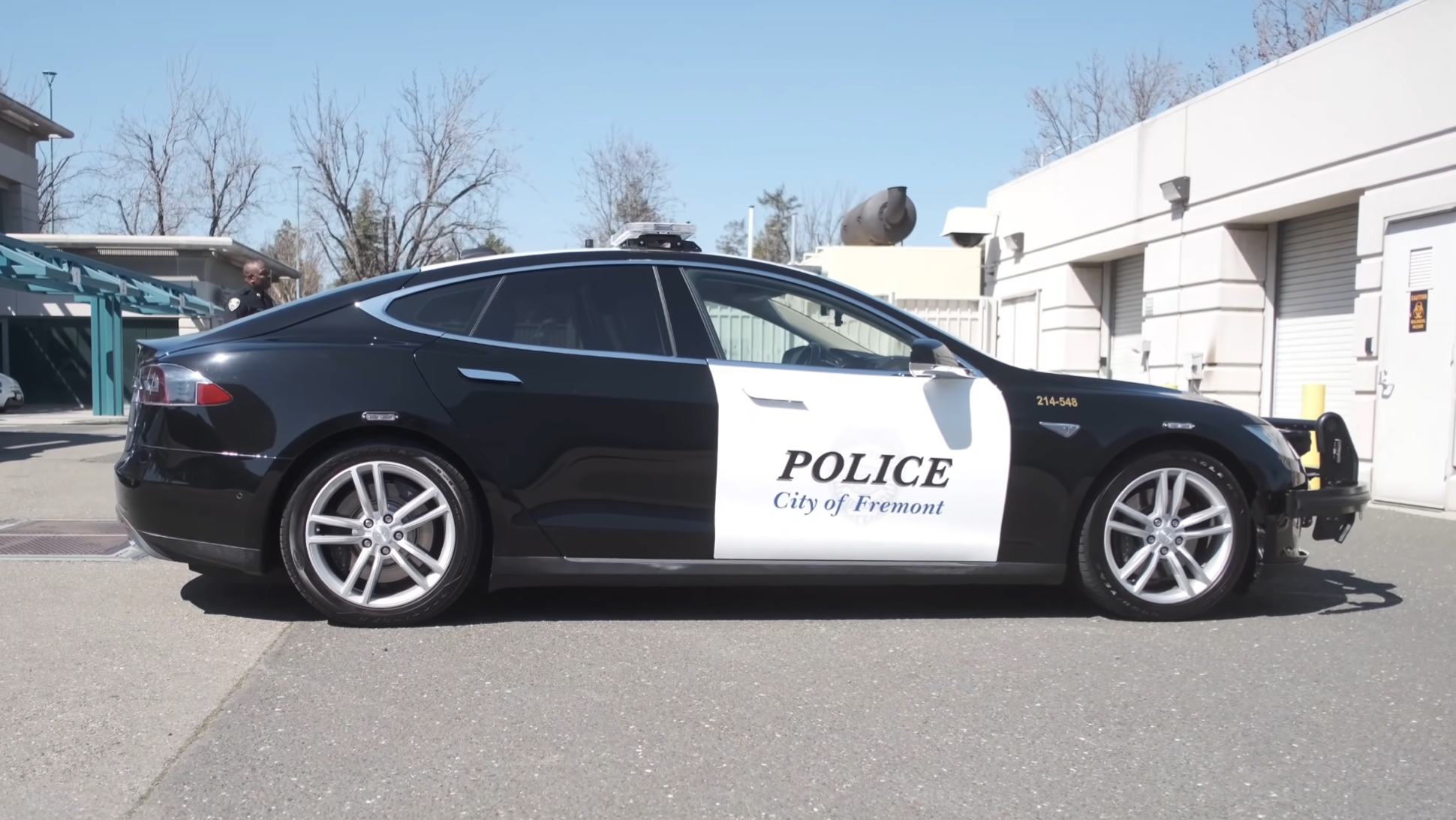

Tesla’s headquarters are in Fremont, California, and in 2018 the local police department purchased a used Tesla Model S 85 to convert into a police car. It’s no “community affairs” cop-out—Fremont Police proudly use it as a regular patrol vehicle. But when the inevitable happened last weekend and it ended up in a high-speed pursuit, the electric cruiser nearly ran out of battery before the suspect escaped in a thicket of traffic, reports the East Bay Times.

According to Fremont Police, Officer Jesse Hartman was nearing the end of his shift in the Tesla on Friday night when he initiated a pursuit after spotting a Toyota Avalon connected to a felony warrant. The chase continued onto I-680 at speeds topping 110 mph with two backup units close behind Hartman as he led the charge. But after eight minutes, he looked down and realized his predicament.
“I am down to six miles of battery on the Tesla, so I may lose it here in a sec,” he radioed his fellow officers. “If someone else is able, can they maneuver into the number one spot?”
Don’t you hate when your phone’s at one percent? But before the Tesla actually ran out of juice, the suspect began driving on the shoulder to pass other vehicles, prompting higher authorities to call off the pursuit in the interest of public safety. Hartman then pulled off the freeway to find a public charger before returning to the station. California Highway Patrol units later located the Toyota crashed into a patch of roadside bushes a short distance past where Fremont Police pulled back. The driver was already gone and still has not been located.
As the story spread throughout the week, Fremont Police took to Facebook on Thursday to point out that the pursuit had been called off for safety reasons before the Tesla ran out of battery, and that its low state was no different than a regular police car running out of gas. Fair enough—what’s less explainable is starting an 11-hour patrol shift at half charge. The department notes that while the Model S is supposed to be recharged between shifts, in this case it “had just been returned from our Corporation yard.” Officer Hartman set out for the afternoon with 50 percent battery.

The example in Fremont’s police fleet is a 2014 Tesla Model S 85, which the department bought used for $61,478.50 directly from Tesla. While it cost them roughly $20,000 more to outfit this Tesla for police duty than it would to have bought a new Ford Explorer police vehicle, it’s also part of a city pilot program to determine the long-term feasibility of using EVs for police duty. The department also expects the Tesla to save on fuel and maintenance costs over time.
The Facebook post also provides some context for its usage. The Model S 85 had a rated range of 265 miles when it was new, but both age and the increased weight of the police gear has dropped the real world number to between 220 and 240. Still, officers beginning their 11-hour shifts with a full charge have generally returned the Tesla with between 40 and 60 percent battery left.
“So far, the vehicle is performing extremely well, and has exceeded our expectations,” the post quotes Captain Sean Washington. “We are already in initial conversations about testing a second vehicle, likely an SUV model, and we look forward to providing our initial results in the near future.”
Clearly, charging after a shift (or at least doing some important police work at a charging station) is important there, especially with the potential for energy-hungry work like this chase. That’s perhaps the biggest issue with using a regular electric vehicle in a police fleet. It’s great press for the Fremont Police to be the first to put their city’s flagship EV to work, especially cool and unusual police cars tend to make headlines when they appear in the fleet. They just might want to make sure it always begins the day ready to give 100 percent.